Oriental Longhairs are a delightful breed of cat, combining the same intelligent and talkative demeanor of their Siamese relatives with a longer coat. They make devoted companions and often form strong bonds with their owners. Their semi-long coats need weekly brushing to keep them looking their best, as tangles can form quickly in the fur.
To help prevent this, you should brush your Oriental Longhair at least once a week or more often if needed, depending on the length of its coat. Bathing may also be required for some cats; however, it’s not necessary for all cats unless they get particularly dirty from playing outdoors or other activities. It is important to use specialized grooming products designed specifically for cats when caring for an Oriental Longhair as regular human shampoos can cause skin irritation and damage to their fur due to its delicate nature.
Caring for your Oriental Longhair includes providing plenty of fun toys that are safe yet stimulating enough to keep them entertained throughout the day while you’re away at work or out running errands. This breed is known for being very active so having toys that encourage physical activity will be beneficial in keeping your pet happy and healthy while helping them burn off excess energy too! Regular playtime with interactive games like fetch as well as routine trips outside
If you’re eager to become a passionate and informed Oriental Longhair guardian, then this is the perfect article for you! Here, we provide comprehensive information about this breed so that you can learn how best to care for and love your furry friend.
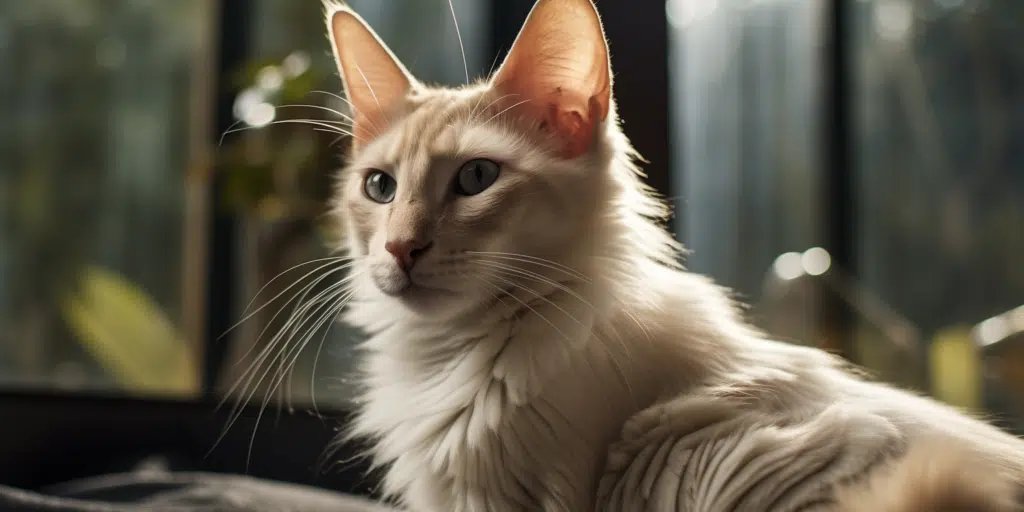
Breed Overview
The Oriental Longhair (or Oriental Shorthair) is a man-made breed that originated in England in the 1950s. After World War II, the number of breeding cats was reduced and some of the remaining breeders became quite creative as they rebuilt their breeding programs.
Many modern breeds were developed from these crosses, including the Oriental Longhair/Shorthairs. The ancestors of this breed were created by crossing Russian Blues, British Shorthairs, Abyssinians, and domestic cats with Siamese cats. In surprisingly few generations, they had produced cats that looked virtually identical to Siamese except for coloration.
At first, each color was given its separate breed names – such as Foreign White and Havana (chocolate). It soon became apparent however that there were too many possible colors to create individual breeds for each one so all non-pointed cats were grouped into one single breed – the Oriental Longhair/Shorthair.
These breeds then began to be imported into the United States during the 1970s where new crosses between American Shorthairs and show-quality Siamese produced yet more colors for this unique breed! Interestingly enough “Havana” colored cats were also imported early on but evolved into a distinct breed called Havana Brown which looks very different from solid chocolate Orientals!
Today’s Oriental Longhairs come in a variety of stunning colors – including sable silver tabby point, brown spotted tabby point, and seal tortie point amongst others! They can vary in size depending on their sex; males typically weigh up to 8 pounds while females will usually be smaller at around 6 pounds or so when fully grown!
This medium-sized cat is lithe and graceful with long legs as well as an elegant neckline which gives them an almost regal appearance! Their noses are slightly longer than most other cat breeds whilst their eyes tend to be big almond shaped giving them an exotic look! Personality-wise these felines are known for being both curious & intelligent making great companions who love attention from their human family members & even strangers alike!
The Oriental Longhair cat is believed to have originated from the United States and the United Kingdom. The breed has a long, glossy coat that gives it its characteristic name. It is thought that this breed was developed from crosses between Siamese cats and other longhaired breeds such as Persians or Angoras. While their exact origin is unknown, Oriental Longhairs are popular in many parts of the world today due to their affectionate personalities and beautiful coats.
Identifying Oriental Longhair Cat
Temperament: Oriental Shorthairs are known to be people-oriented cats with outgoing personalities. They are active, inquisitive, and love attention from their owners. They will follow you around the house and stay close to you, even when you’re busy doing other things. With their highly social nature, they often become very attached to one or two family members in particular, but still show affection for everyone else in the household as well.
Orientals can be quite vocal, with meows and trills and chirps that sound almost like birdsong! This breed is extremely intelligent and interactive; they enjoy playing games such as fetch and hide-and-seek. Because of their intelligence, they can learn tricks easily if properly trained—this makes them an ideal choice for those who want a smart companion cat!
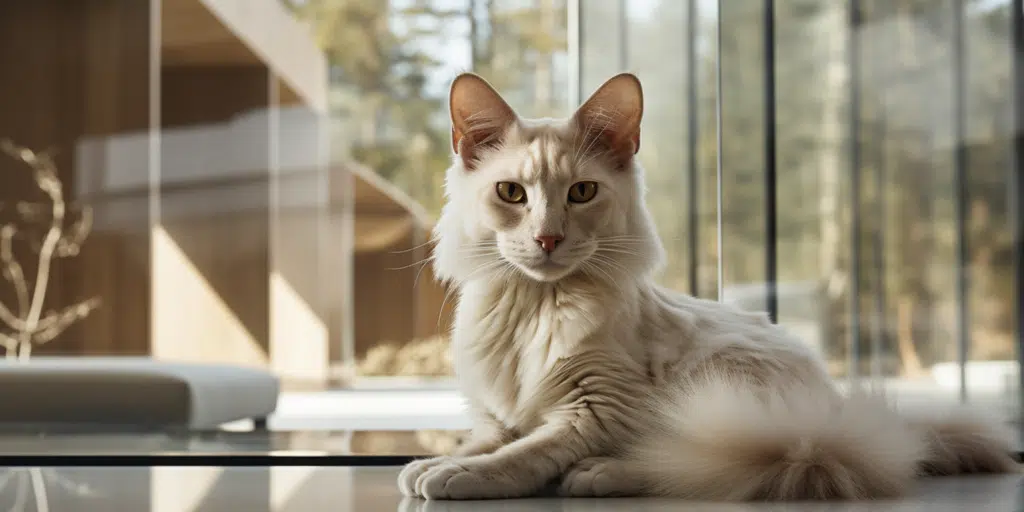
Oriental Longhair cats come in a stunning array of unique color variations. From the traditional solid hues to tabby patterns with one color predominating, and even the tortie and torbie coats that combine both distinctive colors and tabby stripes – these cats truly have it all! Not to mention, each variation can be silver-smoke or with white accents for an extra touch of elegance! With so many beautiful possibilities to choose from, you are sure to find the perfect Oriental Longhair cat that will bring joy into your home.
Personality Traits
Orientals are known for their playful, intelligent, and affectionate personalities. They love to play with their favorite toys and often return them tirelessly to the hands of their human. They also have strong and distinctive personalities that make them stand out from other cats. Orientals are devoted to their people, but some may be “one person” cats who avoid visitors or certain family members.
These cats do not do well as only pets, but they can get along with kids, other cats, dogs, and lots of activity and commotion. In general, they need companionship to thrive in a home environment; otherwise, they will wilt when ignored. With all these traits combined, Orientals make wonderful pets for those looking for an interactive companion who will bring plenty of amusement into the household!
Oriental Longhairs are social cats that love the company of people and other pets. They are not shy when it comes to demanding attention from their owners, so if you have children or other animals in your home, they will be sure to make their presence known.
These cats thrive on interactive play and can learn tricks quickly if you take the time to train them. With kids around, Oriental Longhairs will happily follow them around for hours, trying to get into whatever mischief they can find! When it comes to interacting with other animals in the home, these cats tend to be quite friendly and enjoy a good cuddle session with another animal companion.
Activity Level
Oriental Longhair cats are highly active and energetic animals that require plenty of playtime to stay healthy and happy. They tend to be very curious and adventurous, always looking for new experiences. This breed is also known for its impressive athletic abilities, with many Oriental Longhairs able to jump remarkably high or even do agility courses with ease. To keep them entertained, it’s important to provide them with plenty of interactive toys such as cat trees, teaser toys, balls, and other stimulating activities.
These cats thrive when they are part of an active household where they can spend plenty of time playing games like fetch or tag with their owners or even other pets in the home. They tend to bond closely with their family members and love having people around; this means they do not fare well when left alone for long periods without any companionship. Oriental Longhair cats are social creatures who greatly enjoy the company of both humans and other animals alike so it’s best if there is at least another pet in the home whom they can interact and play with regularly.
Oriental Longhair Cat Loyalty
The Oriental Longhair is a domesticated cat that has become increasingly popular in recent years. It is closely related to the Oriental Shorthair, but it has a longer coat of fur and slightly larger ears. They are known for their intelligence and loyalty, making them an ideal companion for any family or individual looking for a loyal feline friend.
Oriental Longhairs are incredibly intelligent cats and can be trained to do simple tasks like fetching toys, following commands, or even using the litter box. This intelligence also makes them very loving companions who bond quickly with their owners.
Their loyalty goes beyond simply being affectionate – they will often follow their owner around the house and make sure they’re never alone when they need company! They will also protect their family by warning them of potential danger or strangers entering the home.
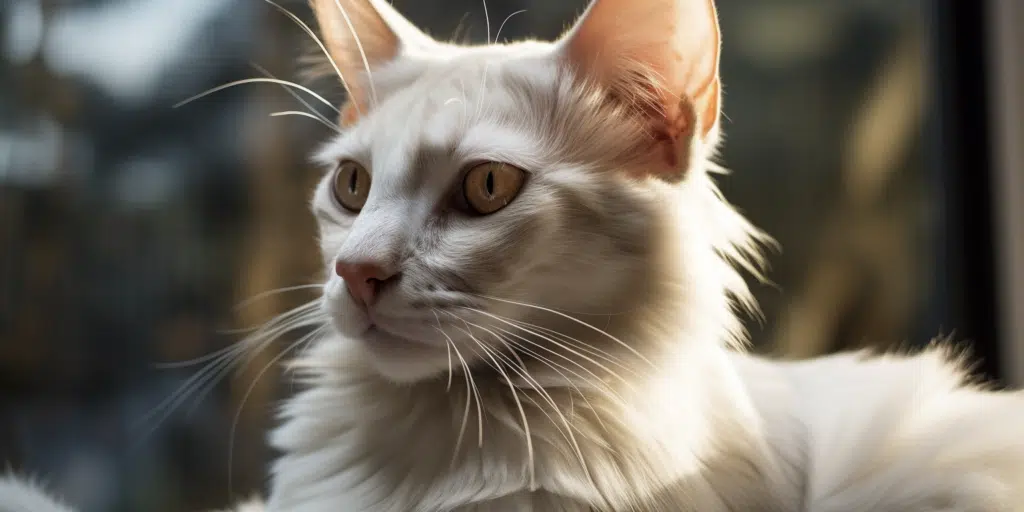
In addition to their great personality traits, these cats have beautiful long coats that come in many different colors and patterns, such as solid black or tabby stripes patterned with white patches on the chest or belly areas. Regardless of which color you choose your cat will look stunningly gorgeous! These cats also have large eyes that show off both love and curiosity at all times – perfect characteristics for anyone looking for an attentive lifelong companion!
Love Of Water
The Oriental Longhair cat is a unique breed that loves water. They are often referred to as the ‘water-loving cats’ because of their enthusiasm for swimming, playing in running water, and even taking baths! While bathing should be introduced into their routine when they are kittens, it is not necessary to bathe them every two to three weeks like other breeds. During times of shedding, however, bathing can help remove dead hair and cut down on the amount of fur being shed around your home.
When you do decide to bathe your Oriental Longhair, make sure you use veterinary-approved shampoo and fill the basin or sink with lukewarm water. Work the shampoo in thoroughly and ensure that all residue is washed out before drying them off with a towel or letting them groom themselves afterward.
You may find that your cat will enjoy splashing around in the warm water while getting clean! Once they get used to it, bathing this breed can be an enjoyable experience for both you and your feline friend – just make sure you keep an eye on them at all times when near any body of water so they don’t wander too far away from shore!
Trainability
The Oriental Longhair is a breed known for its intelligence and curiosity. They are surprisingly trainable, which may come as a surprise given their active personalities. The longhairs’ inquisitiveness allows them to pick up on training cues quickly, making them easier to train than many other breeds of cats.
Positive reinforcement is the most effective way to train an Oriental Longhair cat. This breed responds well to treats or verbal praise when they have completed a task or trick. Patience is also key when it comes to training this breed; they need plenty of time and repetition for them to learn new behaviors or skills.
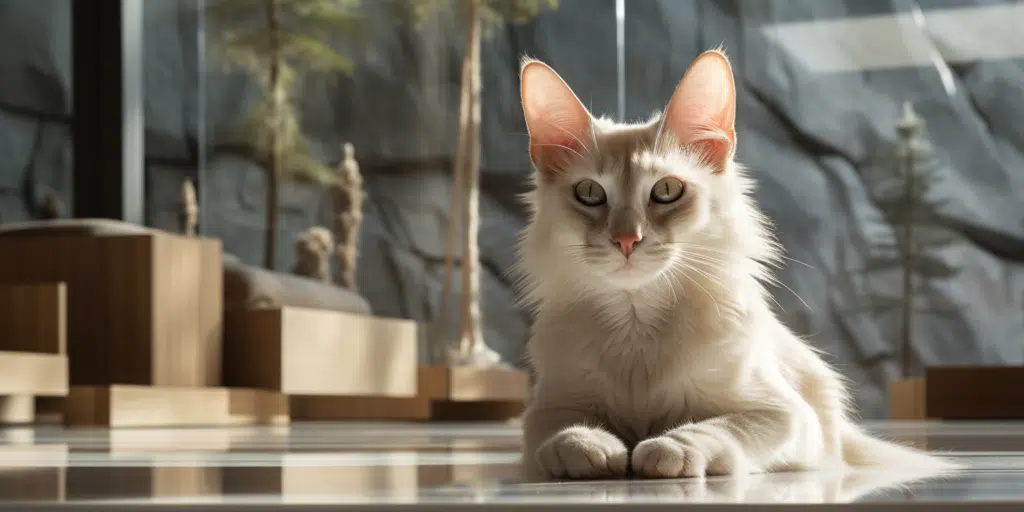
In addition, providing the cat with plenty of physical and mental stimulation will help keep their minds sharp while enhancing their problem-solving abilities during training sessions. Toys such as puzzle feeders, interactive toys that move around the house, or even activities like hide and seek can provide your longhair with ample opportunities for learning and fun!
Training should be enjoyable rather than tedious for both you and your pet; make sure that each session ends on a positive note so that your cat associates learning with good experiences rather than frustration or boredom
Adult Size
The Oriental Longhair cat is a beautiful breed of medium-sized cat with an elegant, graceful appearance. They typically range in height from 8 to 10 inches and have an average length of 17 to 19 inches. As for weight, adult females generally weigh between 5 and 8 pounds while adult males are slightly heavier at around 8 to 12 pounds. Kittens mature slowly and don’t reach their full weight until 18-24 months old.
The Oriental Longhair has a distinctively slender body type with long, lean limbs that give it its graceful look. Its coat is luxurious and silky, often featuring spots or stripes of various colors such as black, grey, brown, or white.
The tail is usually long and fluffy while the muzzle has a distinctive triangular shape that adds to the breed’s unique look. Despite its small size, the Oriental Longhair can be quite vocal due to its Siamese heritage; they love interacting with their owners but can be very independent at times as well!
Oriental Longhair cats are known for their elegant beauty, intelligence, and friendly nature. They are also recognized by their long, luxurious locks which often reach up to 18 inches in length. It’s no surprise that these cats have become increasingly popular due to their unique look and personality. But what many owners don’t know is that the growth rate of Oriental Longhair cats can vary greatly depending on the cat’s age and life stage.
Kittens of this breed grow very quickly during the first six months of life, with the most rapid growth happening in the first three months. During this period they can gain as much as one pound per month! After six months, however, their rate of growth slows down significantly and they only add a few ounces here or there until reaching adulthood at around 1 year old.
Once an Oriental Longhair reaches adulthood it will continue to grow throughout its lifetime but at a much slower rate than before; typically adding between 1-2 ounces per month until maturity is fully reached at around two years old after which point any additional weight gain will be minimal if any at all. This slow rate of growth allows owners to keep track of their cat’s health more easily since drastic changes in weight may indicate potential health issues such as diabetes or
Life Expectancy
The Oriental Longhair is an exotic and beautiful breed of cat that can live a long, healthy life. With proper care and nutrition, these cats have been known to reach an above-average life expectancy of 10+ years or more. The Siamese Breed Group that the Oriental Longhair belongs to is even known to live beyond 20 years!
To ensure your Oriental Longhair reaches their maximum lifespan you should take them for regular check-ups with the vet and maintain a diet rich in proteins and vitamins. Exercise is also important for keeping your cat healthy, so make sure they have plenty of toys and activities available throughout the day to keep them active.
Additionally, providing a stress-free environment is key as cats can easily become overwhelmed with too much noise or change in their living space. As long as you provide your Oriental Longhair with love, care, nutrition, and a safe home they will enjoy many happy years with you!
Oriental Longhair Cat Care
Caring for an Oriental Longhair cat is a breeze! Their silky coat rarely tangles or mats does not shed much, and is easy to groom with weekly brushing. This breed loves being brushed and groomed so it’s a great bonding activity between you and your pet.
For best results, use a soft-bristled brush to keep their coat healthy and free of debris. Brushing will also help distribute natural oils throughout the fur which can prevent matting and stimulate circulation in the skin which helps promote healthy hair follicles.
In addition to brushing their coats, it’s important to trim their nails regularly. Using human nail clippers with care, tip the white area of the nail without going too far into the red blood area inside of it. It may take some practice but once you get used to doing this task regularly, it should become quite simple for both you and your kitty!
Another important part of caring for an Oriental Longhair cat is cleaning their eyes and ears regularly using warm water or specifically designed products from your local pet store such as cotton swabs or washcloths.
Make sure that these areas are cleaned gently—you don’t want to cause any discomfort for them! Doing this will keep them clean from dirt buildup while also preventing any infections from occurring due to bacteria growth in these sensitive areas.
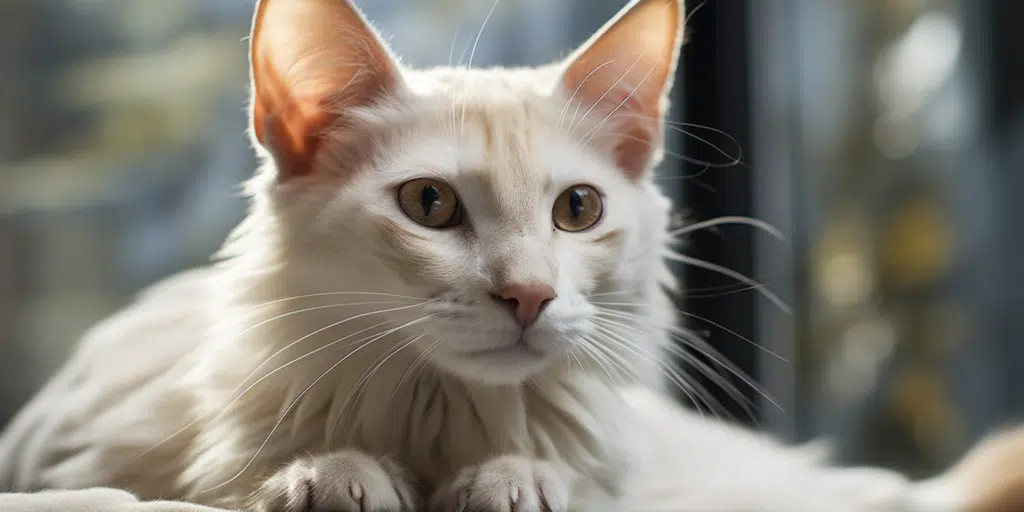
Finally, just like humans need dental hygiene care to maintain good overall health; cats do too! Brush your cat’s teeth at least once per week with vet-approved pet toothpaste available at most local stores or online retailers.
You can also schedule regular veterinary dental cleanings if necessary; depending on how often they eat treats/food that contain sugars or starches that can lead to plaque formation over time on their teeth surfaces.
Overall, taking proper care of an Oriental Longhair cat doesn’t have to be difficult—it just requires consistency & dedication! With regular grooming, eye & ear cleaning, plus proper dental hygiene practices; they’ll stay happy & healthy throughout life while providing unconditional love & companionship all along the way!
Diet
Cats are obligate carnivores, meaning they must consume a diet rich in animal-based proteins to maintain their health. Oriental Longhair cats have specific nutritional needs due to their long, sleek coats and active lifestyle. To keep your cat healthy and happy, it is important to provide them with the proper nutrition.
When selecting food for your Oriental Longhair cat, look for high-quality canned foods that are low in carbohydrates and very high in protein from meat or fish sources. These ingredients should be listed as the first two or three ingredients on the list of contents. Canned foods offer a more bioavailable source of nutrients than dry food which makes it easier for cats to digest and absorb what they need from their meals. Additionally, canned foods contain more moisture which helps keep your cat hydrated throughout the day and keeps its kidneys functioning properly; something that is especially important as cats age since kidney disease can become an issue with older felines.
You may also want to supplement your Oriental Longhair diet with treats such as fresh fruits and vegetables like carrots or apples (be sure to remove any seeds or pits) as well as small amounts of cooked eggs or chicken breast (free-range preferred). This will not only add additional flavor variety but will also provide extra vitamins and minerals that may be lacking in commercial diets. It is important though not to overdo treats because these should make up less than 10% of your cat’s caloric intake for the day so stick with offering just one treat per day at most!
In addition to selecting appropriate meals for your Oriental Longhair Cat, they must have access to fresh drinking water at all times throughout the day; this helps ensure proper hydration levels are maintained while aiding digestion after meals too! Make sure you clean out any bowls daily so there isn’t bacteria building up inside them which could lead to potential health issues down the line if left unchecked

Adult Oriental Longhair cats require an adequate amount of water to stay healthy and hydrated. These cats must be given access to fresh, clean water at least twice a day. It is also recommended that kittens be fed more often, at least three or four times per day, as they burn off calories more quickly and need additional nutrients for proper growth and development.
To ensure your cat drinks enough water each day, it’s best to place the bowl in an area away from food dishes as their sensitive noses may be overwhelmed by strong smells which could lead them to drink less. An alternative method of providing water is using a filtered drinking fountain which can help keep the water cool and encourage increased consumption throughout the day. Additionally, adding wet food or canned tuna can encourage your cat to drink more liquid as part of its meals which will help maintain its hydration levels.
Exercise Requirement
It is important to keep Oriental Longhair Cats active and play to maintain a healthy lifestyle. These cats are typically more active than other breeds, and they require regular exercise to stay healthy. Exercise can help prevent obesity, which can lead to serious health issues such as diabetes, heart disease, and joint problems. Regular activity also helps these cats stay mentally alert and engaged in their environment.
Playing with an Oriental Longhair Cat can also be beneficial for its mental well-being. Toys that challenge the cat’s agility and problem-solving skills will help keep them stimulated while providing physical activity at the same time.
Additionally, interactive toys like laser pointers or feather wands can provide great entertainment for your pet while encouraging them to explore their environment even further. Playing with your cat regularly not only benefits their physical health but it gives you a chance to bond together as well!
Shedding Levels
The Oriental Longhair is a curious, active breed of cat that loves to explore and play. As its name implies, the longhair has an abundance of luxurious fur that requires regular grooming to keep it healthy and tangle-free. While shedding levels vary depending on age, season, and environment, this breed tends to shed more than other cats due to its long coat.

Kittens typically start shedding their baby fur around four weeks old as they grow into adult coats. During this stage of development, brushing your kitty daily will help manage excess shedding as much as possible. Adult cats may require twice daily brushing during peak shedding seasons such as spring and fall to keep up with the amount of hair produced by their thick coats. Senior cats tend to shed less due to decreased hormone levels but should still be brushed regularly for maximum comfort and health benefits.
Health Issues
The Oriental Longhair, despite its moderate-length coat, is relatively low maintenance when it comes to grooming. Weekly brushing should be sufficient to remove any loose hair and keep the cat looking their best. However, as with all cats, routine veterinary visits are important for preventive care and early detection of any health problems that may arise.
Oriental Longhair Cats are generally healthy but like all breeds, they may be susceptible to certain diseases such as hypertrophic cardiomyopathy (HCM), feline infectious peritonitis (FIP), and polycystic kidney disease (PKD). Other common illnesses in this breed include urinary tract infections (UTI), respiratory infections, and parasites such as fleas or ticks. Vaccinations can help protect against many of these diseases so it is important to discuss with your veterinarian what vaccines may be necessary for your Oriental Longhair Cat.

Poor diet and living conditions can have a huge negative impact on the health of an Oriental Longhair Cat. Without proper nutrition, their coats may become brittle or patchy and their overall energy levels will decrease. Additionally, cats in these conditions are more prone to developing diseases such as diabetes, kidney failure, heart disease, and cancer due to lack of nutrition or exposure to contaminants.
The best way to prevent these diseases is by providing your cat with a balanced diet that consists of high-quality proteins and carbohydrates. Additionally, make sure your pet has access to fresh water at all times and provide them with plenty of exercise opportunities indoors or outdoors in a safe environment. Lastly, keep up with regular vet visits for vaccinations and checkups so any potential illnesses can be caught early before they cause serious damage.
Buying Tips
- Look for a reputable breeder: Make sure to research the breeder before purchasing a kitten and ensure that they are reputable and follow good breeding practices. Ask questions about their cats’ health, temperament, and lineage.
- Research the breed: Learn as much as you can about Oriental Longhair Cats so that you know what to expect from your new pet. Consider if this is the right breed for your home environment, lifestyle, and budget before making any decisions.
- Check out the parents: Whenever possible, try to meet or see photos of both parents to get an idea of what your kitten will look like when it grows up. It’s also important to make sure that both parents have been tested for common genetic diseases associated with Oriental Longhairs such as hip dysplasia or heart defects before bringing them home.
- Get an exam from a veterinarian: Before bringing your new pet home, take them for an exam with a veterinarian to check their overall health and confirm that they do not have any hidden medical issues that could become problematic later on down the road (such as parasites or illnesses).
- Socialize early: Start socializing your kitten early by introducing them gradually to other people, animals, and environments to help them adjust better once they come into their new home environment. This will help prevent behavioral issues such as aggression down the line too!
You Might Like: Oriental Longhair Cat Names: We Hand-Picked The Best Ones!

Conclusion
The Oriental Longhair Cat is a unique and beautiful breed of cat to consider as a pet. They are very social, affectionate, and intelligent cats who enjoy playing with their owners. Their beautiful coats come in many colors and patterns, making them an attractive addition to any household.
They also require minimal grooming due to their short coats which makes them easy to care for. Overall, the Oriental Longhair Cat is a great choice for anyone looking for an energetic and loving companion that will bring joy into your home.